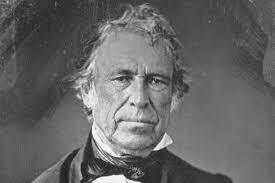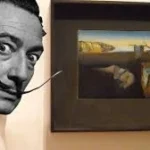
Zachary Taylor, a key figure in 19th-century American history, traversed the realms of military prowess and presidential leadership with a distinctive style. Born on November 24, 1784, in Virginia, Taylor emerged from a lineage steeped in Revolutionary War legacy. From his early military career and notable victories in the Mexican-American War to his unexpected presidency, Taylor left an indelible mark. This introduction delves into 25 historical facts and numerical trivia, unraveling the layers of his life, military exploits, and political impact. Join us on a journey through the life of “Old Rough and Ready,” exploring the complex tapestry of a man whose legacy resonates in the annals of American history.
Birth Date and Place: Zachary Taylor was born on November 24, 1784, in a small plantation near Barboursville, Virginia, nestled in the scenic Blue Ridge Mountains. Born to a distinguished family of planters, his father, Richard Taylor, had fought in the American Revolutionary War, instilling in young Zachary a sense of duty and patriotism.
Family Background: The Taylor family’s roots ran deep in American history. Zachary Taylor’s lineage could be traced back to early settlers, and his father’s service in the Revolutionary War underscored the family’s commitment to the fledgling nation. Growing up in this environment, Taylor imbibed the values of courage, loyalty, and dedication to the country.
Military Career Start: In 1808, Taylor embarked on his military journey by joining the U.S. Army. This marked the beginning of a remarkable military career that would see him rise through the ranks and earn recognition for his strategic acumen and leadership on the battlefield.
Indian Wars: Taylor’s military prowess was honed during the Indian Wars, notably his involvement in the Black Hawk War of 1832. His experiences in these conflicts shaped his tactical skills and earned him the respect of his fellow soldiers.
Mexican-American War: The Mexican-American War thrust Taylor into the national spotlight. In 1846, he achieved a significant victory at the Battle of Palo Alto, showcasing his military brilliance and setting the stage for his later political career.
Battle of Palo Alto: The Battle of Palo Alto, fought on May 8, 1846, marked a turning point in the Mexican-American War. Taylor’s forces engaged the Mexican army, and his strategic decisions led to a decisive American victory. This triumph solidified Taylor’s reputation as a military hero and bolstered his popularity among the American public.
Nickname: “Old Rough and Ready” became Taylor’s enduring moniker, a testament to his gritty and approachable leadership style. This nickname reflected not only his willingness to endure the rigors of military life alongside his troops but also his straightforward and unpretentious demeanor.
Presidential Election: In 1848, the Whig party nominated Taylor as their presidential candidate. His popularity as a war hero, coupled with his lack of political experience, appealed to voters seeking a strong leader. Taylor won the election, securing his place as the 12th President of the United States.
Inauguration Date: On March 4, 1849, Zachary Taylor took the oath of office, inaugurated as the President of the United States. The nation looked to this military hero with hope, expecting his leadership to guide them through the complex issues of the time.
Short Presidential Term: Tragically, Taylor’s presidency was cut short. He served only 1 year, 4 months, and 5 days before his untimely death on July 9, 1850, leaving the nation in shock and altering the course of American politics. The brevity of his term left a lasting impact on the historical narrative surrounding his presidency.
Death: Zachary Taylor’s sudden demise on July 9, 1850, in the White House marked the first instance of a sitting U.S. president’s death while in office. The circumstances surrounding his death have spurred numerous theories, ranging from natural causes such as acute gastroenteritis to more speculative ones involving possible foul play or poisoning. Despite ongoing debates, the exact cause remains uncertain.
Cause of Death: The mysterious circumstances surrounding Taylor’s death have led to various hypotheses. Some historians argue that he succumbed to a severe case of acute gastroenteritis, while others suggest potential poisoning due to his controversial political positions, particularly his opposition to the extension of slavery into newly acquired territories.
Shortest-Serving President: Zachary Taylor holds the distinction of being the second shortest-serving U.S. president, with a tenure of just 1 year, 4 months, and 5 days. His abrupt departure from office created a void that Vice President Millard Fillmore would fill, altering the trajectory of American politics.
Burial: Taylor’s final resting place is in the Zachary Taylor National Cemetery in Louisville, Kentucky. This solemn site stands as a tribute to the military hero and former president, surrounded by the graves of countless soldiers who served their nation.
No Political Background: One of the defining aspects of Taylor’s presidency was his lack of prior political experience. Unlike many of his predecessors, Taylor had never held public office before assuming the highest office in the land. This unique background contributed to the enigma surrounding his short-lived political career.
Slave Owner: While Taylor was a slave owner with a substantial plantation in Louisiana, he paradoxically opposed the extension of slavery into newly acquired territories, reflecting the complexities of his views on this divisive issue that would eventually lead to the American Civil War.
Land Acquisitions: Taylor’s presidency oversaw the acquisition of vast territories, including California and New Mexico, following the Treaty of Guadalupe Hidalgo. This treaty ended the Mexican-American War and reshaped the map of North America, setting the stage for the country’s westward expansion.
Gold Rush: The California Gold Rush, which began in 1848 during Taylor’s presidency, marked one of the most significant events of the 19th century. The discovery of gold in California spurred a mass migration of fortune-seekers, transforming the region and contributing to its eventual statehood.
Wilmot Proviso: Taylor’s presidency grappled with the contentious issue of slavery in the newly acquired territories. The Wilmot Proviso, a proposed amendment to ban slavery in these regions, became a focal point of debate, illustrating the deep-rooted tensions between the Northern and Southern states.
Compromise of 1850: Taylor staunchly opposed the Compromise of 1850, a series of legislative measures aimed at resolving the slavery issue. His resistance to this compromise, coupled with his sudden death, set the stage for Vice President Millard Fillmore to assume the presidency and ultimately support the compromise, altering the course of American politics.
Military Leadership Style: Zachary Taylor’s military leadership style was characterized by directness and hands-on engagement. Unlike some commanders who directed from the rear, Taylor often positioned himself on the front lines, leading his troops in the midst of battle. This approach earned him the admiration and respect of his soldiers, fostering a strong sense of camaraderie within his ranks.
Physical Appearance: Standing at approximately 5 feet 8 inches (173 cm), Taylor was considered tall for his time. His physical stature, combined with a commanding presence, contributed to his image as a military leader and later as the President of the United States.
Military Ranks: Throughout his military career, Taylor attained various high-ranking positions, including major general and major general of the Army, the highest rank at the time. His ascent through the military hierarchy reflected not only his capabilities but also the recognition of his contributions to the nation’s defense.
Monuments and Memorials: Several monuments and memorials stand as testaments to Zachary Taylor’s legacy. The Zachary Taylor National Cemetery in Louisville, Kentucky, serves as his final resting place, while the Zachary Taylor Hall at the U.S. Military Academy pays tribute to his contributions to the military. These memorials ensure that his impact on American history is remembered and honored.
Political Impact: Zachary Taylor’s death had a profound impact on the political landscape of the time. With his unexpected passing, Vice President Millard Fillmore assumed the presidency and took a different stance on key issues, most notably supporting the Compromise of 1850. This shift in leadership and policy direction marked a turning point in American politics, influencing the course of events leading up to the Civil War. Taylor’s legacy, both in the military and as a brief president, continues to be studied and analyzed for its broader implications in shaping the nation’s history.








